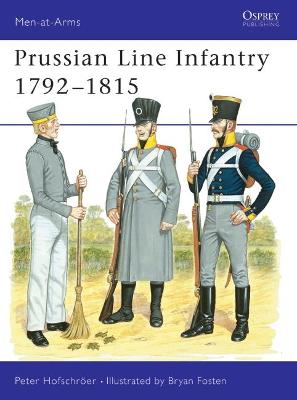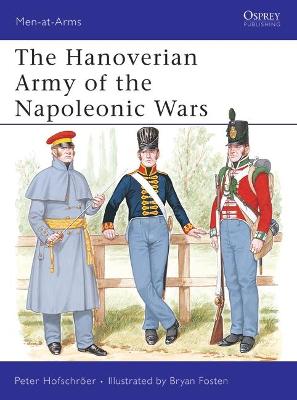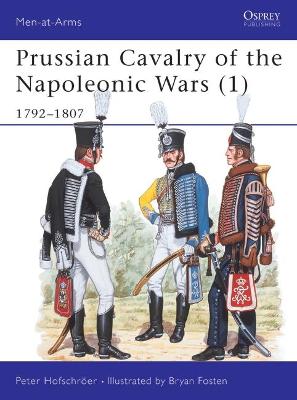Men-at-Arms
5 primary works • 6 total works
Book 149
The Prussian light infantry branch was founded in the reign of Frederick the Great (1740-1786) and continued to develop from then onwards. It was the light troops of the Austrian army, the Croatian border soldiers, which so impressed Frederick in the Seven Years' War (1756-1763)that he considered it necessary to create an effective counter-force. Initially, there was a degree of reluctance amongst certain sections of the army towards this formation of light infantry. However, the Fusilier Battalions came to be regarded as elite formations, being well-trained, disciplined and carefully selected men led by young, fit and intelligent officers. This book describes in detail the uniforms, organization, training and weapons of this spectacular force."
Book 152
At the beginning of this period, the battalions of the Prussian Line usually fought in a linear formation three ranks deep, overwhelming the enemy with fire before a well-timed bayonet attack. By the end, the preferred formation was eight to 12 ranks deep. The responsibility for conducting the fire-fight was now given to the skirmish elements and the artillery. The formed battalions provided support for the fire line, and conducted the decisive bayonet charge. Whatever the change, the spirit and ability of the infantry remained consistently high throughout this bloody period.
Book 192
Irregular, semi-regular and reserve formations comprised a substantial part of the armed forces at the disposal of the Prussian Army throughout the Napoleonic Wars, particularly during the campaigns of the Wars of Liberation, 1813-15. The scale of the uprising of 1813 required the mobilization of all available forces and the utilization of all available equipment, and meant that the Prussian Army of the Wars of Liberation was very much a patchwork affair. This book examines and illustrates the reservists (or Kruemper), the Freikorps and foreign units, and the militia who fought in the Prussian Army.
Book 206
Of all the armies of the German States, that of Hanover remains of greatest interest to the British reader due to the close links between the crowns of the two states. Throughout the Napoleonic era Britain and Hanover had the same head of state, George III. Symbolic of their close relationship, the Hanoverian Army wore uniforms and used equipment largely similar to those used by the British Army. Complemented by numerous illustrations and photographs, plus eight full page colour plates, this text explores the uniforms and organization of the army of the Electorate of Hanover and the King's German Legion.
Book 381
The Prussian armies that fought France were a key factor from the early Revolutionary Wars to the final campaigns of 1813-15, culminating in Marshal Blucher's joint victory with Wellington at Waterloo. Prussia was the most important of German states throughout the period, seeing both disaster and triumph. This work covers the Prussian Army of the Napoleonic Wars. It describes the organization, equipment, tactics and uniforms of the Artillery, Engineer and Medical branches; the staff; and colours and standards of pre-1806, post 1806 and 1815.
When Frederick II (later known as Frederick the Great) came to the throne in 1740, he had three advantages for which he owed thanks to his father: a modern, well-organised state; full coffers; and a properly trained and equipped army. Under a leader as renowned as Seydlitz, the Prussian cavalry achieved the nearest to a state of perfection that it was ever going to. So great was its reputation in the Seven Years' War that Napoleon made a special point of warning his men at the beginning of the 1806 campaign to beware of the Prussian cavalry.





